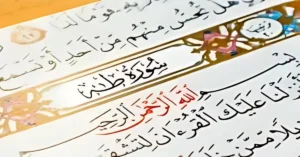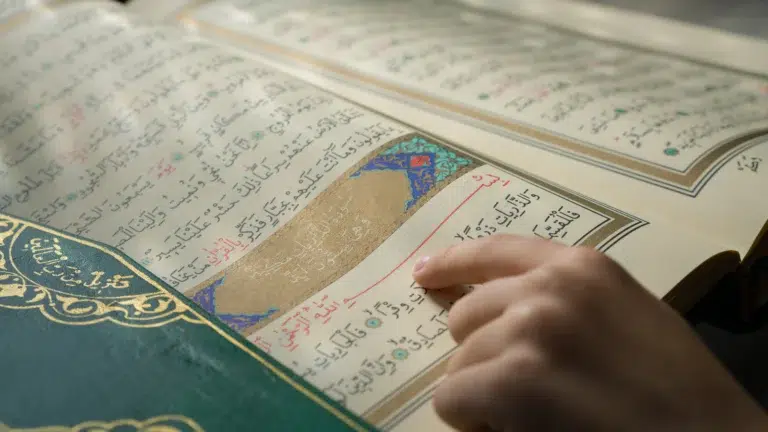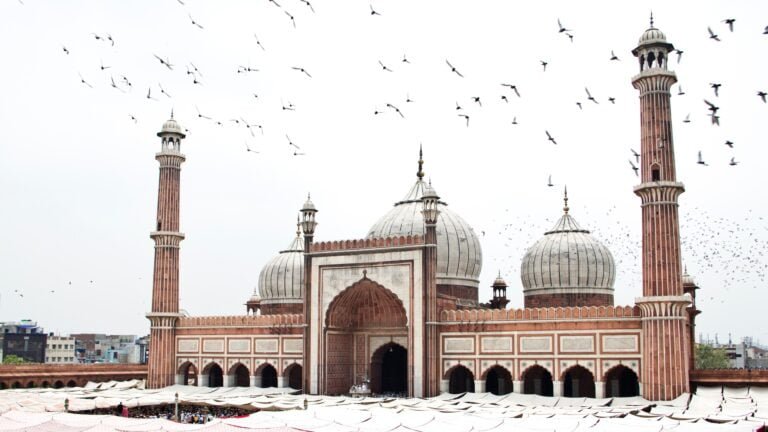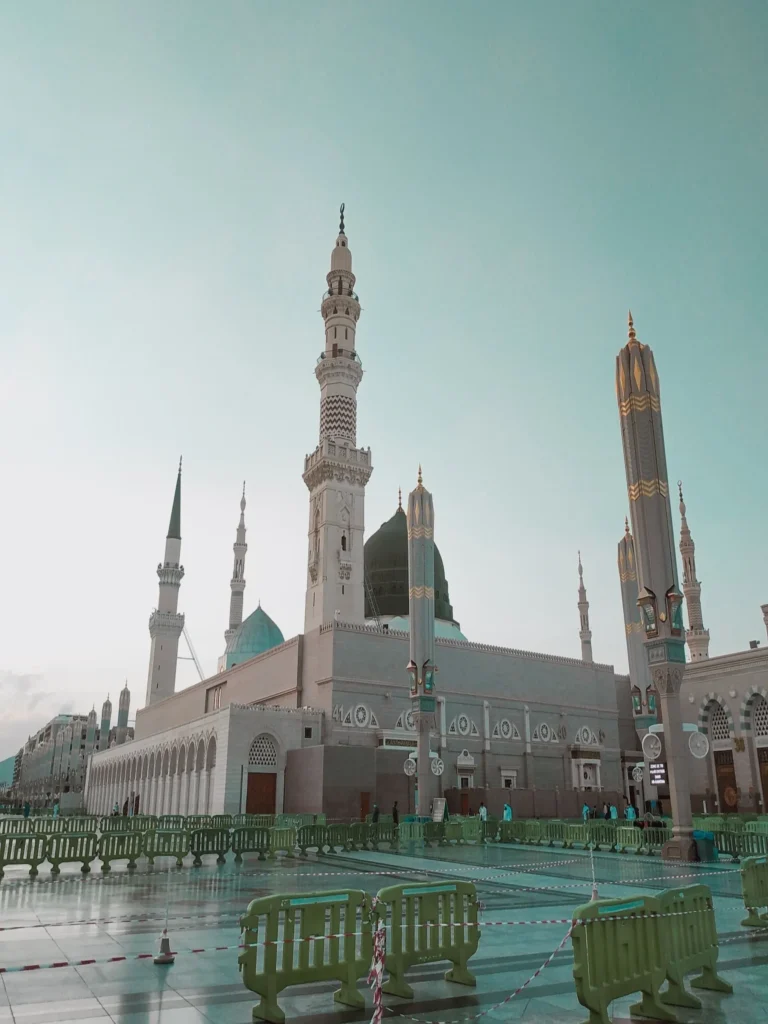Introduction
Hajj is a religious pilgrimage that is obligatory for Muslims to perform at least once in their lifetime. The rituals of Hajj are performed over five days during the month of Dhu al-Hijjah. One of the rituals requires pilgrims to spend the night of the 9th Dhul Hijjah at Muzdalifah under the open sky.
The name Muzdalifah is derived from the Arabic verb “Izdalafa,” which means “to approach” or “to come near.” Muzdalifah is also known as al-Mashar al-Haram, which is mentioned in the Quran.
![[Surah Baqarah verse 198]](https://islamicmentors.com/wp-content/uploads/2024/04/Surah-Baqarah-verse-198.webp)
This verse emphasizes the significance of remembering and praising Allah (SWT) during the pilgrimage, especially at Muzdalifah, where spiritual renewal is sought.
For more information about Understanding Hajj and the historical significance of Hajj, visit the following blog post:
Journey from Arafat to Muzdalifah
After sunset on the Day of Arafat, pilgrims embark on a serene journey to Muzdalifah. It’s a peaceful procession, walking or by bus, reflecting on the profound spiritual experiences shared during the day.
The distance between Arafat and Muzdalifah may vary depending on your starting and ending points as well as the route you take. If you are travelling by train between certain stations in Arafat and Muzdalifah, the distance is approximately 10 kilometers. However, if you are driving, the distance increases to about 17 kilometers. It usually takes around 15 minutes by car, but this can vary depending on traffic and the time of day. During Hajj, when the roads are more congested, travel times may be longer.
One of the main challenges during the transit from Arafat to Muzdalifah is managing the large crowd of pilgrims. It is important to remain patient and calm during this journey. Rushing or pushing should be avoided, as all pilgrims are in the same state of purity and unity. Engaging in continuous Dhikr (remembrance of Allah (SWT) and making Essential Duas can help maintain the spiritual focus of the journey.
The journey from Arafat to Muzdalifah during Hajj signifies the transition from reflection to preparation for the next stages of Hajj.
Activities in Muzdalifah
Combining Prayers (Salah)
During the Hajj pilgrimage, when worshippers reach Muzdalifah, they perform a unique ritual known as “combining salahs at Muzdalifah“. This ritual involves merging and shortening the Maghrib and Isha prayers, which are performed during Isha as Qasr. The ritual starts with one Adhan, followed by Iqama, and then three rak’ahs for Maghrib. After reciting Takbir al-Tashreeq, worshippers perform two rak’ahs for Isha, which are concluded with another Takbir al-Tashreeq and Talbiyah. This streamlined form of worship is beneficial in accommodating large crowds during the Hajj pilgrimage.
Read more: The Days of Tashreeq.
For more information about Adhan and daily prayers, you can visit these blog posts:
Spending the Night
Spending a night in Muzdalifah is an integral part of the Hajj pilgrimage. Pilgrims sleep under the open sky, which is a profound moment of equality and humility. The experience strips away worldly differences as everyone rests side by side on the ground. The atmosphere is filled with a deep sense of peace and communal spirituality as millions share the same space in quiet reflection and prayer.
Collecting Pebbles for Rami
One of the preparatory acts for the final rite of Hajj, known as Rami al-Jamarat, is collecting pebbles in Muzdalifah. This involves throwing stones at three pillars, symbolically stoning the devil. The act symbolizes resistance to temptation and rejection of evil.
For more information, visit our blog Rami al-Jamarat: The Ritual of Stoning the Devil during Hajj.
On the 10th, 11th, and 12th day of Dhul Hijjah, you will perform Rami (the stoning of the devil). The size of the pebbles should be similar to the size of date stones or seeds. You will need a total of 49 pebbles.
You’ll need a certain number of pebbles for each of the three days. The breakdown is as follows:
- 7 pebbles for the 10th of Dhul Hijjah
- 21 pebbles for the 11th of Dhul Hijjah
- 21 pebbles for the 12th of Dhul Hijjah
It’s important to follow the guidelines for the number of pebbles required. Each of the three Jamarat is stoned with seven pebbles on each day, for a total of 21 pebbles per day. This is to ensure that there are extra pebbles in case some of them miss the target or are accidentally dropped during the ritual.
Departure from Muzdalifah
After performing the Fajr prayer at dawn, the pilgrims begin to leave Muzdalifah and continue to make supplications until sunrise. This time is very important for reflection and spiritual preparation for the next phase of Hajj. Before departing, the pilgrims collect their belongings and ensure that they leave the area clean.
The distance from Muzdalifah to Mina is about 2 to 2.5 miles. This allows pilgrims to quickly reach their next destination for the significant ritual of Rami al-Jamarat.
After arriving at Mina, the pilgrims perform the symbolic stoning of the devil at the Jamarat. Usually, they cover this distance on foot. This slow and steady walk provides an opportunity for reflection and continued devotion, enabling them to sustain the spirit of unity and patience experienced throughout the Hajj.
Frequently Asked Questions (FAQs)
No, fasting on the Day of Arafah is not mandatory for those performing the Hajj pilgrimage, including those in Muzdalifah.
This is supported by the hadith from Sunan Ibn Majah, where Hazrat Abu Hurairah (RA) relates that Hazrat Muhammad (SAW) forbade fasting on this day for those present at Arafat.
It was narrated that Hazrat ‘Ikrimah (RA) said: “I entered upon Hazrat Abu Hurairah (RA) in his house and asked him about fasting the Day of ‘Arafah at ‘Arafat. Abu Hurairah said: ‘The Messenger of Allah (saw) forbade fasting the Day of ‘Arafah at ‘Arafat.'” Sunan Ibn Majah 1732
Collecting more than 70 pebbles can be considered a precautionary measure in case some pebbles are lost or misplaced, or if there is a need to repeat the throwing due to a miss. However, collecting fewer than the specified number could mean that you may need more pebbles to complete the ritual correctly on subsequent days unless you collect additional pebbles later.
If you are unable to reach Muzdalifah for health reasons, alternative options are available in Islamic teachings. It is important to prioritize health and safety and consult with religious authorities or guides for advice based on individual circumstances and current health guidelines.
Conclusion
Muzdalifah is a significant stop during the Hajj pilgrimage. It marks a night of unity, reflection, and preparation for pilgrims. The open plain situated between Arafat and Mina symbolizes a transitional space where pilgrims collect pebbles for the Rami al-Jamarat. This ritual symbolizes the rejection of evil. Spending the night under the stars promotes equality and brotherhood among millions of pilgrims, reminding them of their humility before Allah (SWT).
As we conclude our discussion on Muzdalifah, I extend heartfelt wishes of Hajj Mubarak to all pilgrims. May your journey be filled with grace, and may your prayers be accepted.
“Labbaik Allahumma Labbaik” — Here I am, O Allah, here I am.









